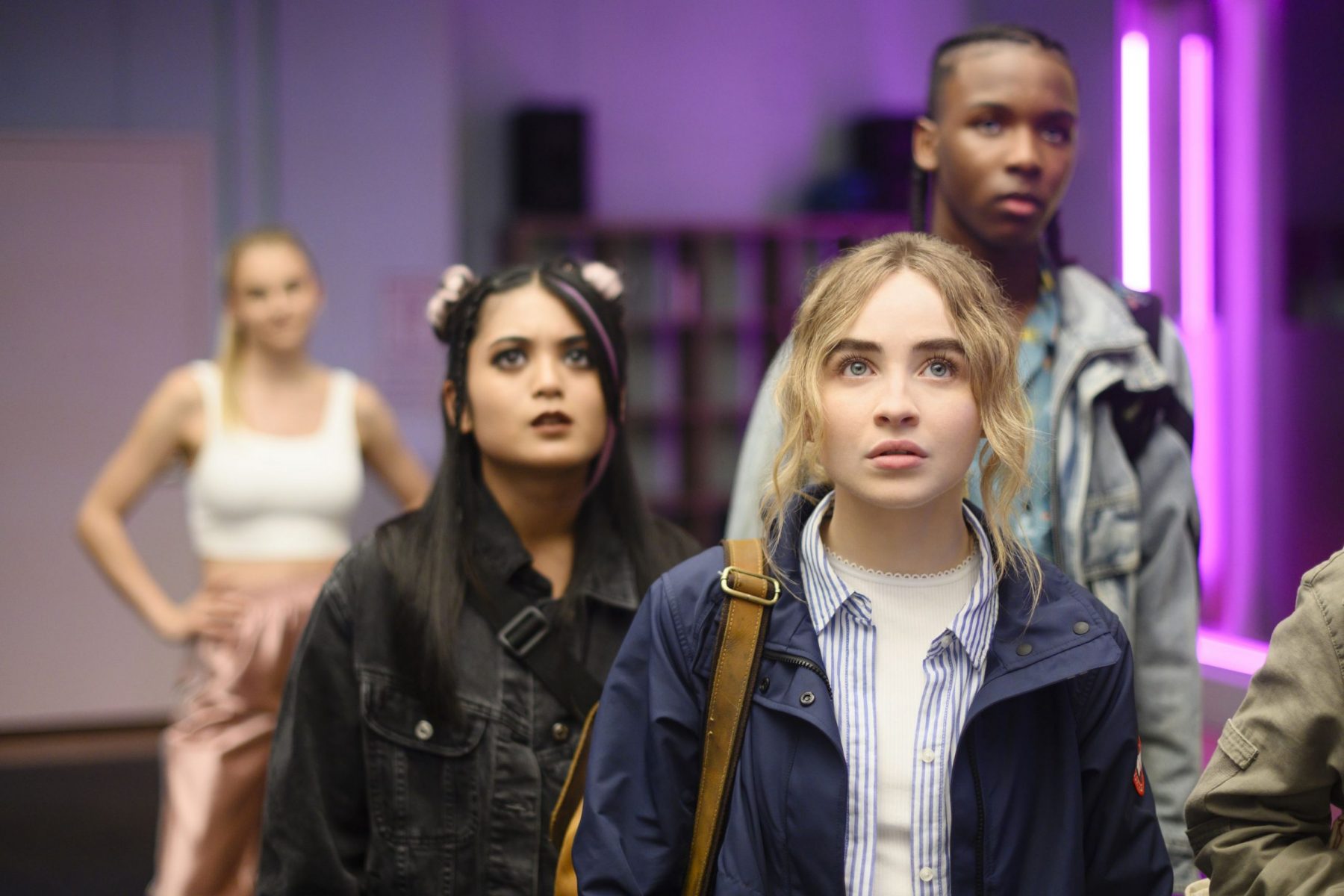Today’s coming-of-age storylines look a little different than those of the ‘80s. Netflix’s new movie “Work It” overwrites themes about ditching school and getting high in the library and replaces them with getting straight As and boosting high school resumes.
Released in August, “Work It” introduces viewers to Quinn Ackerman (Sabrina Carpenter), a go-getting high school senior with the hope of making it into her dream college, Duke University. During her college interview, Quinn fibs about participating in her high school’s elite dance team, the Thunderbirds, to make her application seem more impressive. After auditioning for and being rejected by the Thunderbirds, she comes to the conclusion that her only chance at getting into Duke is to start a dance team of her own.
With the help of her best friend and well-seasoned dancer, Jas (Liza Koshy), Quin forms the TBDs, a group of misfit dancers who face heat from the Thunderbirds as they prepare for the Work It competition, where they both vie for the winning title. Aside from being a team composed of rag-tag underdogs, the TBDs face a major roadblock: Quin can’t dance to save her life.
“Work It” initially drew my attention for its plotline surrounding adolescence. I’m always looking for a good coming-of-age film that accurately captures the tribulations of high school. Plus, who doesn’t love Sabrina Carpenter?
“Work It” is by no means the most realistic coming-of-age movie to ever grace Netflix’s home screen; it certainly has its far-fetched moments, like when the TBDs’ first performance goes so poorly that it causes a nursing home resident to die. However, the movie does focus on an aspect of high school that many others in the same genre overlook — the pitfalls of overcommitted high school culture.
If it’s been a while since the last time you walked through your high school doors and smelled crusty cafeteria food, let me give you a refresher on the modern high school climate. According to a 2018 report from the National Association for College Admission Counseling, the percentage of high school students who applied to three or more colleges skyrocketed from 61% in 1995 to 82% in 2016.
A CNN article published in 2019 noted that this increase in college applications has caused the acceptance rate of these schools to decrease. With a smaller chance of getting into many universities, high school students feel the need to up their game by taking on more extracurricular activities and AP classes, spreading themselves too thin and stressing themselves out in the process.
It makes sense that if Netflix is going to make a contemporary and somewhat realistic coming-of-age movie, they need to create a character that fits the 2020 perfectionist and grade-obsessed teen aesthetic. Who better for the job than Quinn Ackerman, the preppy, driven and overcommitted student at the top of her class? She leads the AV club, volunteers at a nursing home, serves on the student government board and watches a TED Talk while brushing her teeth every morning.
What I find so interesting about “Work It” is that Quinn’s anxiety over getting into a good school is not just a mere character trait— it’s an ideology present at the forefront of the film, one that lays the groundwork for the rest of the plot. Viewers get a sense of this as they sit through the opening sequence.
“Sometimes I wonder, if Einstein were alive today, would he even have gotten into college?” Quin says. “I mean, sure he was good at math and science, but did he have extracurriculars? These days, colleges want a little bit of everything.”
The coming-of-age part of the film involves Quin stepping out of this mindset, something accomplished through her newfound dance hobby, along with an external voice of reason that comes from Ms. Ramirez (Michelle Buteau), the free-spirited Duke admissions counselor.
Ms. Ramirez encourages Quinn to focus less on filling in the typical extracurricular box and instead to “blow up the box” and explore engaging activities she feels passionate about. When Quinn says Duke is all she has ever wanted, Ms. Ramirez quickly puts things into perspective. “That’s sad … it’s just a school, it’s just walls. It’s not passion,” Ms. Ramirez says.
But “Work It” isn’t just a movie about a high school brainiac who learns to shut the books and have some fun for once. Quinn’s failure to dance well, specifically to freestyle, shows her inability to let loose and use her emotions rather than logic.
After Quin has a freestyling blunder that mostly consists of side-steps and flailing arms, her best friend Jas notes that “freestyling is about getting out of our heads,” something the viewer sees Quinn struggle to do throughout the movie. This sentiment is further stated by the TBDs’ choreographer and Quinn’s love interest, Jake Taylor (Jordan Fisher).
“You don’t have to be in control all the time,” Jake says before giving Quinn a dance lesson in one of the movie’s most pivotal scenes. “You’re not studying for a midterm.”
As someone who graduated high school just two years ago, I’ve seen this play out on a personal level — with the exception of the dancing part. A certain obsessiveness surrounds worrying about college admissions, one that causes you to check the electronic grade portal on a daily basis to see how the last biology exam will affect your GPA.
Having a character like Quin Ackerman on screen — someone who plays the overwhelming game of maintaining perfect grades and filling every spare moment with an extracurricular — not only creates a relatable movie for its Gen Z audience, but provides insight that may not have been apparent before.
Perhaps it’s cliché to say that the best movies are the ones that help you learn something along the way, but “Work It” really does give viewers something to hold onto after they get up from their couch.
They are simple messages — enjoy the process instead of focusing on the outcome; think less and feel more. In a time when high school has become more stressful than crash landing an airplane in a thunderstorm, “Work It” shows viewers what it could be like to live in an environment where they don’t have to worry as much, something that, especially today, can be difficult to imagine.

















